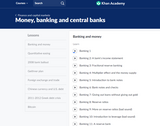
This lesson explains leverage and insolvency and why it is good or bad. [Banking, Money, Finance playlist: Lesson 10 of 24]
- Subject:
- Economics
- Social Science
- Material Type:
- Lecture
- Author:
- Salman Khan
- Date Added:
- 02/05/2019

Lower Level: An introduction to the role of commercial banks, other financial institutions, and the central bank in affecting the performance of the economy; relationships of monetary and fiscal policy in an open economy to prices, production, and employment.
Upper Level: The role of commercial banks, other financial institutions, and the central bank in affecting the performance of the economy; relationships of monetary and fiscal policy in an open economy to prices, production, and employment.

This lesson explains leverage and insolvency and why it is good or bad. [Banking, Money, Finance playlist: Lesson 10 of 24]
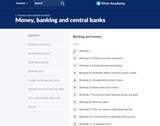
This lesson tells how banks can give out loans without ever giving out gold. [Banking, Money, Finance playlist: Lesson 7 of 24]
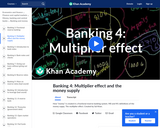
This lesson talks about how money is created in a fractional reserve banking system. [Banking, Money, Finance playlist: Lesson 4 of 24]
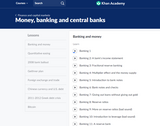
This lesson explains reserve requirements and how they limit how much lending a bank can do. [Banking, Money, Finance playlist: Lesson 8 of 24]
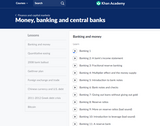
This lesson introduces bank notes and how you are more familiar with them than you realize. [Banking, Money, Finance playlist: Lesson 5 of 24]
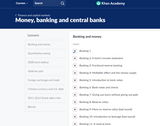
This lesson discusses government debt and treasuries. It explains what it means that Federal Reserve Notes are issued by the Reserve Bank but are not an obligation on the government. [Banking, Money, Finance playlist: Lesson 12 of 24]
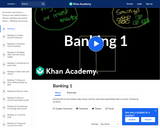
This lesson introduces the ways that banks make money. [Banking, Money, Finance playlist: Lesson 1 of 24]
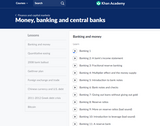
This lesson introduces the ways that banks make money. [Banking, Money, Finance playlist: Lesson 1 of 24]
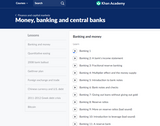
This lesson is an introduction to the income statement of a bank, and to income statements, in general. [Banking, Money, Finance playlist: Lesson 2 of 24]
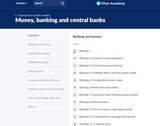
This lesson discusses the idea of a reserve bank. [Banking, Money, Finance playlist: Lesson 11 of 24]
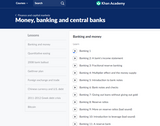
This lesson explains the weak points of fractional reserve banking. [Banking, Money, Finance playlist: Lesson 22 of 24]
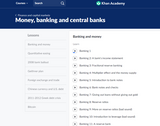
This lesson continues the discussion of fractional reserve banking. It further discusses the FDIC, deposit insurance and its side effects. [Banking, Money, Finance playlist: Lesson 23 of 24]
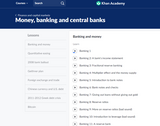
This lesson is a summary of thoughts of why Fractional Reserve Banking is a subsidy to banks and allows them to arbitrage the yield curve. [Banking, Money, Finance playlist: Lesson 24 of 24]
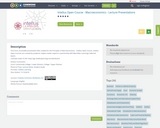
Accessible presentation files created for the Principles of Macroeconomics - Intellus Open Course. Intellus Open Courses are curated by academic subject-matter experts in partnership with Macmillan Learning’s editorial teams. Licensed under CC-BY: https://go.intelluslearning.com/attribution

Imagine that you are a bank and a main part of your daily business is to lend money. Unfortunately, lending money is a risky business – there is no 100% guarantee that you will get all your money back. If the borrower defaults, you will face losses in your portfolio. Or, in a bit less extreme scenario, if the credit quality of your counterparty deteriorates according to some rating system, the loan will become more risky. These are typical situations in which credit risk manifests itself.
According to the Basel Accord, a global regulation framework for financial institutions, credit risk is one of the three fundamental risks a bank or any other regulated financial institution has to face when operating in the markets (the two other risks being market risk and operational risk). As the 2008 financial crisis has shown us, a correct understanding of credit risk and the ability to manage it are fundamental in today’s world.
This course offers you an introduction to credit risk modelling and hedging. We will approach credit risk from the point of view of banks, but most of the tools and models we will overview can be beneficial at the corporate level as well.
At the end of the course, you will be able to understand and correctly use the basic tools of credit risk management, both from a theoretical and, most of all, a practical point of view. This will be a quite unconventional course. For each methodology, we will analyse its strengths as well as its weaknesses. We will do this in a rigorous way, but also with fun: there is no need to be boring.
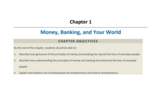
The financial crisis of 2007-8 has already revolutionized institutions, markets, and regulation. Wright's Money and Banking V 2.0 captures those revolutionary changes and packages them in a way that engages undergraduates enrolled in Money and Banking and Financial Institutions and Markets courses.
Minimal mathematics, accessible language, and a student-oriented tone ease readers into complex subjects like money, interest rates, banking, asymmetric information, financial crises and regulation, monetary policy, monetary theory, and other standard topics. Numerous short cases, called "Stop and Think" boxes, promote internalization over memorization. Exercise drills ensure basic skills competency where appropriate. Short, snappy sections that begin with a framing question enhance readability and encourage assignment completion.
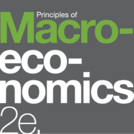
Principles of Macroeconomics 2e covers the scope and sequence of most introductory economics courses. The text includes many current examples, which are handled in a politically equitable way. The outcome is a balanced approach to the theory and application of economics concepts. The second edition has been thoroughly revised to increase clarity, update data and current event impacts, and incorporate the feedback from many reviewers and adopters. Changes made in Principles of Macroeconomics 2e are described in the preface and the transition guide to help instructors transition to the second edition. The first edition of Principles of Macroeconomics by OpenStax is available in web view here.

By the end of this section, you will be able to:
Analyze whether monetary policy decisions should be made more democratically
Calculate the velocity of money
Evaluate the central bank’s influence on inflation, unemployment, asset bubbles, and leverage cycles
Calculate the effects of monetary stimulus

By the end of this section, you will be able to:
Explain the various functions of money
Contrast commodity money and fiat money

By the end of this section, you will be able to:
Utilize the money multiplier formulate to determine how banks create money
Analyze and create T-account balance sheets
Evaluate the risks and benefits of money and banks